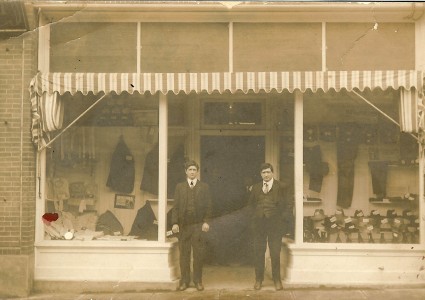
It’s 1995 and a clothing store owner is proudly placing a ‘now open for business’ sign by the front door to attract customers. The front of the store is adorned with the best-looking mannequins sporting the latest in hip 90’s grunge. Customers file in the front door because they like what they see in the main windows and the store does pretty well.
10 years pass and it is clear that this internet thing isn’t going away, so the store owner’s daughter decides it is time for the store to get a website! A design process ensues and 6 months later a great-looking website is built, pairing the latest fashion with the hottest models on the front page. The sub pages of the site are plain and basically list inventory — like the store, the owner expects customers to be drawn in by the front window display and then look around the site.
The owner of the store has just made the common error of applying a well known business practice to the web.
Front Door Disease
Take a second and think about your site traffic –what percentage of your monthly traffic enters through the front page? If you don’t have a site, take a guess at what percentage of DoSomething.org’s traffic entered through the front page in June. Go on, I’ll wait… Maybe you think it is 50%, that would make sense — half of the people find Do Something by name or a front page link and the other half may go to a cause or campaign they care about. Or maybe it is closer to 30% — you’re a bit savvier about search engines and assume there are a lot of sub pages that bring people in through search.
In the story above, the clothing store invests heavily in the visual identity of the front page, the same way they invest in their store front window. Unlike the brick and mortar store, their site has hundreds of front doors. Every page on their site serves as an entry point that must convert a potential customer.
Front Door Disease is defined by an organization that focuses all of their design and conversion goals on the front page of their site — ignoring sub pages. A conversion goal can be a donation, email sign-up, or a new user registration.
Sadly, Front Door Disease currently affects a majority of not-for-profit web sites because the site is approached as brochure or an annual report for the organization. It may look good on the outside, but then breaks down to plain text on deeper pages.
5 Steps to Deal with Front Door Disease
If you are currently going through a web site redesign process, here are some things you can do.
- Find your front door
Use Google Analytics (or similar web analytic product) to find the top 10 entrance pages on the site. And identify types of content, like blog posts or fact pages, that when aggregated together represent a large entrance path. - Identify site goals
What do you want people to do on your site? Donate, sign-up, contribute content? These goals should be clear to users on major entry points. - Stakeholder testing
Show a small group of stakeholders that use your site (and some that don’t) the new design options for all pages and ask them to talk through where their eye goes. (For more on usability: http://www.sensible.com). - Make the case
Throwing all the data in the world at your team will not necessarily convince people. Instead ask the front door question to your team; make it fun by betting a dollar on whether they think it is over or under 50%. Continue the conversation with the points in this article. - Invest in sub-page design
Don’t be cheap by only investing in a front page design. Especially now that you know that most people don’t enter through it! Good design that drives a web site’s goals and reinforces the brand on every page is worth every dollar.
So no matter how much you want to roll back to Windows 95 and relive the 90’s, your web strategy has to live in the present.

